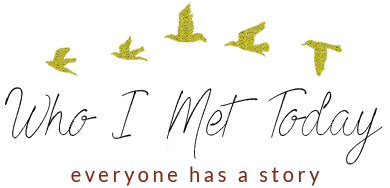Sharon Maxwell – Protecting Florida’s Sea Turtles
As the sun rises, Sharon Maxwell strolls along a beautiful mile-long stretch of beach in the Florida Panhandle. Carefully searching for evidence of night-time visitors in the dim morning light, this early morning walk is a type of peaceful meditation for her. And then she spots them – faint tracks leading out of the water, heading toward the dunes, and returning to the ocean. After two decades, she still gets goose bumps – there’s not a better feeling in the world.
Although loggerheads are the most frequent visitors, the threatened or endangered leatherbacks, greens, and Kemp’s ridley also make rare appearances during the May to October nesting season. Using the earth’s magnetic fields to direct them to the same general area where they were born, these magnificent sea turtles lumber ashore, lay their eggs, and then trudge back to the sea. After about sixty-five days, the hatchlings will pit their egg with their tiny tooth, and, guided by moonlight, head for the ocean. All kinds of things can go wrong for these tiny turtles – crabs, drowning, humans, lights steering them off course, debris on the beach blocking their way, holes to fall into. Only one in a thousand hatchlings will live to be twenty to thirty years, the age they reproduce.

Photo courtesy of Sharon Maxwell
For twenty-two years Sharon has coordinated the South Walton Turtle Watch volunteers who walk the area beaches at sunrise to locate and protect nesting sea turtles. Meeting me at the end of her driveway, Sharon and her furry pal Millie greet me like we’ve been friends forever. This fun-loving, 76-year-young dynamo with the pink-tinted hair guides me to her porch overlooking a creek and her bountiful property. With wind chimes tinkling, Sharon points out her hummingbird feeder, herb garden, ducks and roses and casually mentions she swims thirty-three laps a day in the swimming pool we pass by.
Fiercely passionate about animals and our environment, Sharon and her husband worked on Kwajalein Island, part of the Marshall Islands chain, back in the seventies. “The Marshallese would catch sea turtles and show them off in salt water pools before releasing them back to the ocean,” says Sharon. Thus began her interest in these solitary, gentle creatures who existed with the dinosaurs. “Only they are still here,” she says quietly.
Just how does Sharon spot signs of a turtle coming ashore? Well, if it’s a massive, thousand pound leatherback, “it is extremely easy,” she laughs. Any well-trained volunteer cannot possibly – “or better not!” – miss the six-feet wide tracks in the sand. According to Sharon, “it looks like a tractor has plowed it’s way up the beach and back to the ocean.”

Photo courtesy of Sharon Maxwell
At almost three hundred pounds, the loggerhead maneuvers through the sand with her heavy, extremely large head and flippers. Leaving tracks only a trained eye can spot, “most of her head drag is covered up with her shell drag,” explains Sharon. When she determines her nesting spot, the loggerhead makes a pit, and “it’s the most amazing thing I’ve ever seen,” says Sharon. And she’s been lucky enough to see a turtle dig a nest – one time – on an East Coast shoreline.
With lots of animation, Sharon demonstrates how the loggerhead uses her HUGE back flippers to scoop out the loose top sand in her nest cavity. “She cups them like so, flips the sand, and then does the same thing on other side.” When her flippers come up empty, she can’t go any deeper, and she is finished digging.

Photo courtesy of Sharon Maxwell
The turtle then squats and fills her hole with pink, rubbery, ping pong balls. “She lays about a hundred eggs and covers them up – another awesome sight,” continues Sharon. Using her big flippers once again, she covers the hole with sand and pats it down. Then back to the water, more telltale tracks in her wake, and that’s the last the nest and future hatchlings will see of her. When she’s finished and you look at a nest, it simply looks like thrown sand.

Photo courtesy of Sharon Maxwell
When the volunteers discover a nest, they shift into high gear, staking and flagging the area to protect it. Hopefully the nest is far enough away from the water line. If not, Sharon and company actually have a complicated way to move the nest – always straight back toward the dunes and still in the turtle’s “area.”

Photo courtesy of Sharon Maxwell
I expect an emphatic “yes” when I ask if sea turtle nests are declining in the area. Surprisingly, Sharon tells me South Walton, not counting the state parks, averages fifty nests a year. Last season they located 127 nests and, of course, they miss some. Although this lovely area of Florida is becoming more developed, people are also more aware of the need to protect these creatures. Beach vendors are cooperative and work with Sharon and her group. Once volunteers have “cleared the beaches” with their texting system, usually about 6:15 am, the umbrellas and chairs can go up.

Sharon thought about retiring from her South Walton Turtle Watch position two years ago – but the thought didn’t last long. “It is good for me and good for the turtles,” she reflects. “Plus I have to constantly learn,” she adds. “I develop web pages, download photos, text, stuff other 76-year-olds don’t necessarily know how to do!”






Good for her! I admire her continued commitment to the turtles.